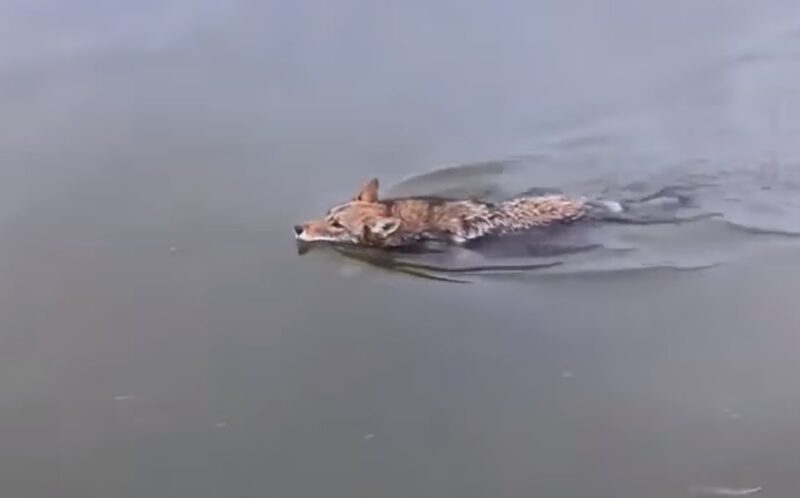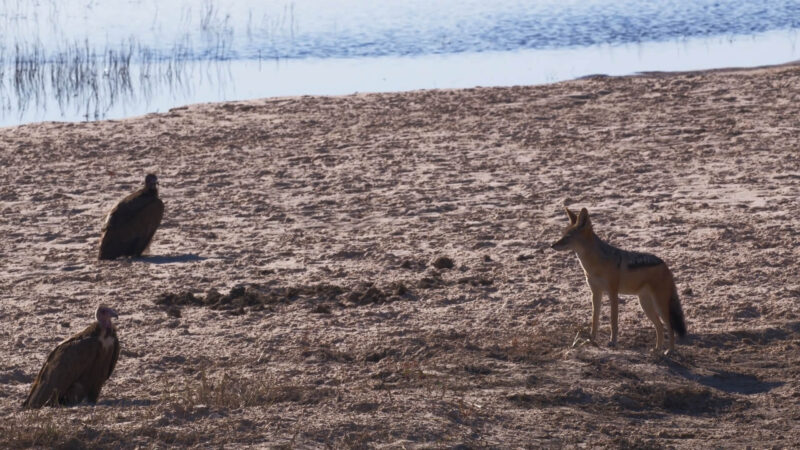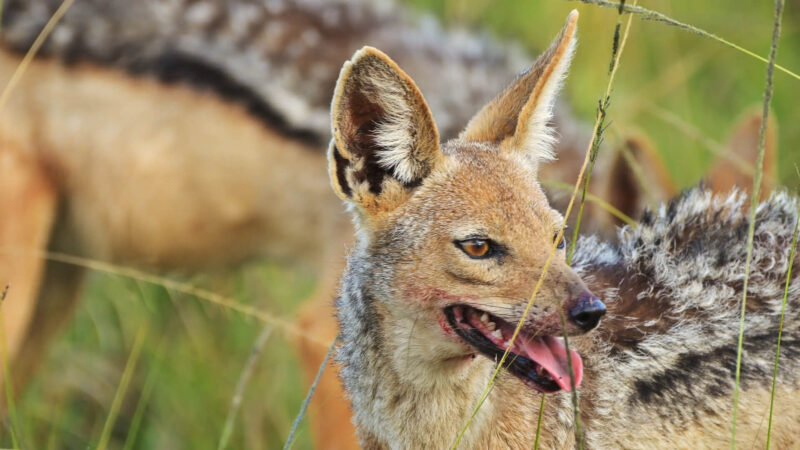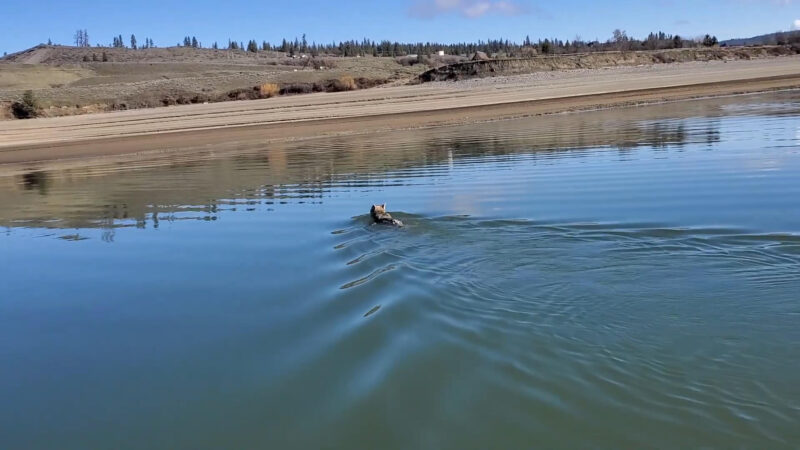The image of a coyote typically evokes scenes of deserts and prairies, where sources of water are limited. However, observing a coyote cross a river raises the question: Can coyotes swim?
This leads us to explore their adaptability and resilience, particularly their swimming abilities, which might surprise many.
Key Takeaways
- Coyotes are skilled swimmers: Despite commonly being associated with dry, terrestrial environments, they have proven to be capable swimmers.
- Physical adaptations such as buoyant fur, an effective rudder-like tail, and strong paws for propulsion enable coyotes to swim efficiently.
- They utilize their swimming abilities for both hunting and escaping predators, showcasing their strategic use of water for survival.
Swimming Abilities

Coyotes are indeed capable swimmers, a trait they share with other members of the Canidae family. This capability extends their remarkable adaptability, allowing them to thrive in a wide range of habitats across North America.
From dense forests and urban sprawls to the heart of deserts and the peaks of mountains, coyotes have made every landscape their home. But what about bodies of water?
Adaptations for Swimming
Several physical adaptations equip coyotes for swimming. Their fur, which includes a thick undercoat, provides buoyancy, while the longer guard hairs repel water, helping them stay afloat with ease.
The coyote’s tail serves as an effective rudder, guiding its direction in the water, and their paws, though not as webbed as some aquatic mammals, are strong and provide sufficient propulsion.
Distance and Speed

While they might not match the speed of aquatic specialists, they can swim at least 0.5 miles, albeit at a slower pace than their land speed. This distance is not big, especially when compared to other canids like wolves, which are known for their swimming abilities to pursue prey or cover territory.
Interaction with Water
Coyotes exhibit a comfortable relationship with water. They are known to cross icy streams, navigate flooded areas, and even bathe in streams during the hot summer months. This comfort with water is a testament to their adaptability and survival skills.
Reasons for Swimming
These are the two main reasons why coyotes swim – hunting and escaping.
Hunting for Food
Swimming allows coyotes to pursue a diverse diet. Water in ecosystems where these animals live is rich with potential prey, including fish, amphibians, and other aquatic or semi-aquatic organisms. They take advantage of these food sources, showcasing their opportunistic feeding behavior.
Escaping Predators
Swimming also serves as a vital escape mechanism. Water can provide a refuge or a means to evade pursuit in the face of threats from larger predators such as bears (also great swimmers), cougars, wolves, and even eagles.
Coyotes swim at a top speed of 3 mph, which is pretty slower than Michael Phelps, the fastest swimmer ever, who reached speef of 4.7 mph.
Diet and Hunting

Their diets are as varied as their habitats. While primarily carnivorous, they do not shy away from omnivorous behavior, consuming fruits and vegetables when available. Their hunting strategies are equally versatile, with swimming adding an aquatic dimension to their diverse hunting repertoire.
Would a coyote hurt a human?
These animals are potentially dangerous wild animals, especially to children and pets. However, even if attacks against grown humans are rare, it is still happening.
Taylor Mitchell killed by a pack of coyotes
In 2009, a hiker and Canadian country-folk singer and songwriter from Toronto Taylor Mitchell was killed by a pack of these animals in Cape Breton Highlands National Park. This incident, marked the first recorded instance of coyotes killing an adult in North America, shocked experts.
Mitchell was bitten over most of her body, with serious wounds to her leg and head. She died of blood loss at the hospital.
The attack raised concerns about the safety of co-existing with coyotes. Researchers found that these animals in the area changed their diet to hunting moose due to extreme climate conditions.
The study suggests that coyotes learned to attack larger mammals, including humans, due to their adaptation to hunting moose.
These animals largely avoided areas frequented by people and preferred to roam at night.
The research debunked claims that coyotes were attracted to human food as a factor in the attack. The study concludes that extreme unprovoked predatory attacks by coyotes on people are associated with unique ecological characteristics.
FAQs
How smart is a coyote?
These animals are incredibly smart and adaptable critters that have learned to survive in just about any habitat – including human-created habitats.
How fast can run?
Normally they run as fast as 25 to 30 miles an hour but can run 35 to 40 miles an hour when pursued.
Do you know that’s coyotes run about 20 miles per hour faster than Usain Bolt, the fastest man ever.
Can cats fight off coyotes?
If the cat is large and very determined, and the coyote is young, alone and inexperienced, it’s possible.
Summary
Coyotes are highly adept swimmers and survivors, capable of navigating a wide range of North American habitats, from urban sprawls to remote wilderness. Their swimming skills are supported by physical traits such as buoyant fur and strong limbs, enabling them to hunt in water and evade predators. This versatility in habitat preference and dietary habits highlights their ability to adapt to changing environments and resource availability.
Their engagement with aquatic environments for food and safety is a special one. Coyotes maintain a balanced diet by consuming both animal and plant matter, showcasing their omnivorous nature.
Related Posts:
- Can Bears Swim? - Everything You Need to Know
- 11 Largest Whales of North America: Unveiling the…
- Wings of Miniature Majesty: Appreciating 15 North…
- 10 Slowest Animals in North America - Slow and Steady
- 18 Largest Birds Of North America - How They Survive…
- 10 of the Largest Animals In North America - Nature's Giants








